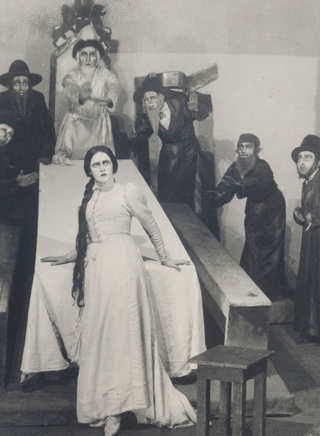
The Dybbuk, or Between Two Worlds is a play by S. Ansky, authored between 1913 and 1916. It was originally written in Russian and later translated into Yiddish by Ansky himself. The Dybbuk had its world premiere in that language, performed by the Vilna Troupe at Warsaw in 1920. A Hebrew version was prepared by Hayim Nahman Bialik and staged in Moscow at Habima Theater in 1922.

Evelyn Preer, was an African American pioneering screen and stage actress, and jazz and blues singer in Hollywood during the late-1910s through the early 1930s. Preer was known within the Black community as "The First Lady of the Screen."

Jessica Valentina Dragonette was a singer who became popular on American radio and was active in the World War II effort.

Myrtle Stedman was an American leading lady and later character actress in motion pictures who began in silent films in 1910.

Helen Menken was an American stage actress.
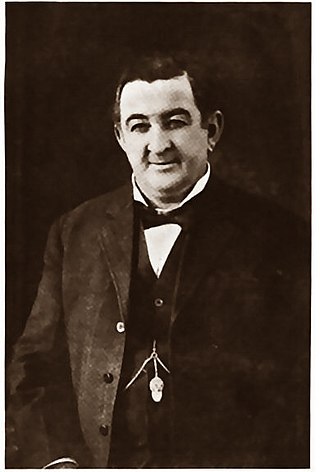
Fred Gamble was an American film actor. He appeared in more than 130 films between 1913 and 1928. He was sometimes billed as Fred Gambold.

Ethel Grey Terry was an American actress of the silent era. She is best remembered for her role in The Penalty with Lon Chaney.

Lawrence Chenault was an American vaudeville performer and silent film actor. He appeared in approximately 24 films between years 1920 and 1934; most of his performances were in films directed by pioneering African-American filmmaker Oscar Micheaux. His brother, Jack Chenault, was also a film actor.
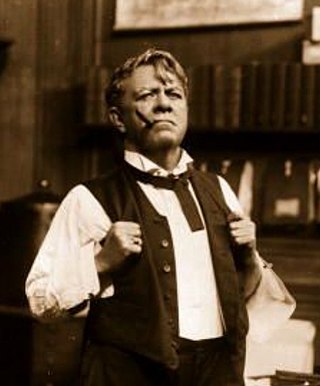
George Fawcett was an American stage and film actor of the silent era.
Murray Kinnell was a British-born American actor, recognized for playing smooth, gentlemanly, although rather shady characters. He began acting on the English stage in 1907, toured in the United States from 1912 through 1914, then returned to England where he served in the British Army during World War I. After the war, he emigrated to the US. He appeared in 71 films between the pre-code era of 1930 and 1937. He later served the Screen Actors Guild in several positions for 16 years.
A number of theatre companies are associated with the Harlem Renaissance.

Morton and Mayo were a Vaudeville dance and comedy duo from approximately the 1920s to the 1940s who were predominantly known for an artificial horse act known as Pansy the Horse. "Mayo" was Andy Mayo and "Morton" was portrayed by both Al Morton from 1923 to 1931 and by Nonnie Morton from 1931 to 1942.
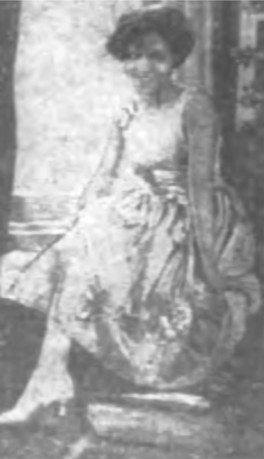
Hilda Perleno was an American blues and jazz singer, known for her Broadway appearances in the 1920s and 1930s.

Alma Lenore Francis was an American dancer, singer, and stage actress. She had an international career as a theatrical actress and operatic soprano in numerous stage productions, as well as a short-lived career in Hollywood, appearing in three feature films during the silent era.

Molly June Gordon is an American actress, screenwriter and director.
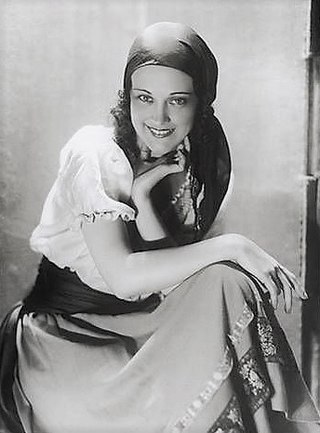
Lottice Howell was an American coloratura soprano and actress best known for her singing of popular and semi-classical music.

Helen Lee Worthing was an American actress, mostly active in the era of silent film.

Hattie King Reavis, also known as H. King Reavis or Hattie Beatrice Reavis, was a singer, song writer, and theater performer from the United States. She performed with fellow African Americans in New York City in the 1920s, toured Europe on various trips through 1930, and recorded with Black Swan Records. In addition to singing, she worked as a recruiter for the Southern Syncopated Orchestra and later managed the career of Urylee Leonardos. From the 1930s to the end of 1940, she acted in New York in various shows, such as in the touring ensemble of the 1932 Broadway revival of Show Boat and several performances of On Strivers Row by Abram Hill. In 2019, selections from artists of Black Swan Records, including Reavis, were digitized, edited, and released by Parnassus Records.
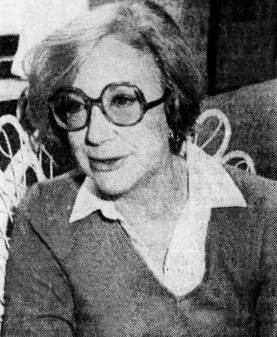
Bella Jarrett was an American stage, television, and film actress as well as a novelist. Her acting credits include Broadway, Off-Broadway, television series, and films.
Edna Morton was an American actress who was in films in the 1920s. She starred in mainly race films most of them produced by Reol Productions. Her most notable films being Spitfire (1922), Easy Money (1922), and The Call of His People (1921). She was also in a film by Oscar Micheaux called A Son of Satan (1924). She is known to have been in ten films in total. She was referred to as "the colored Mary Pickford".

















